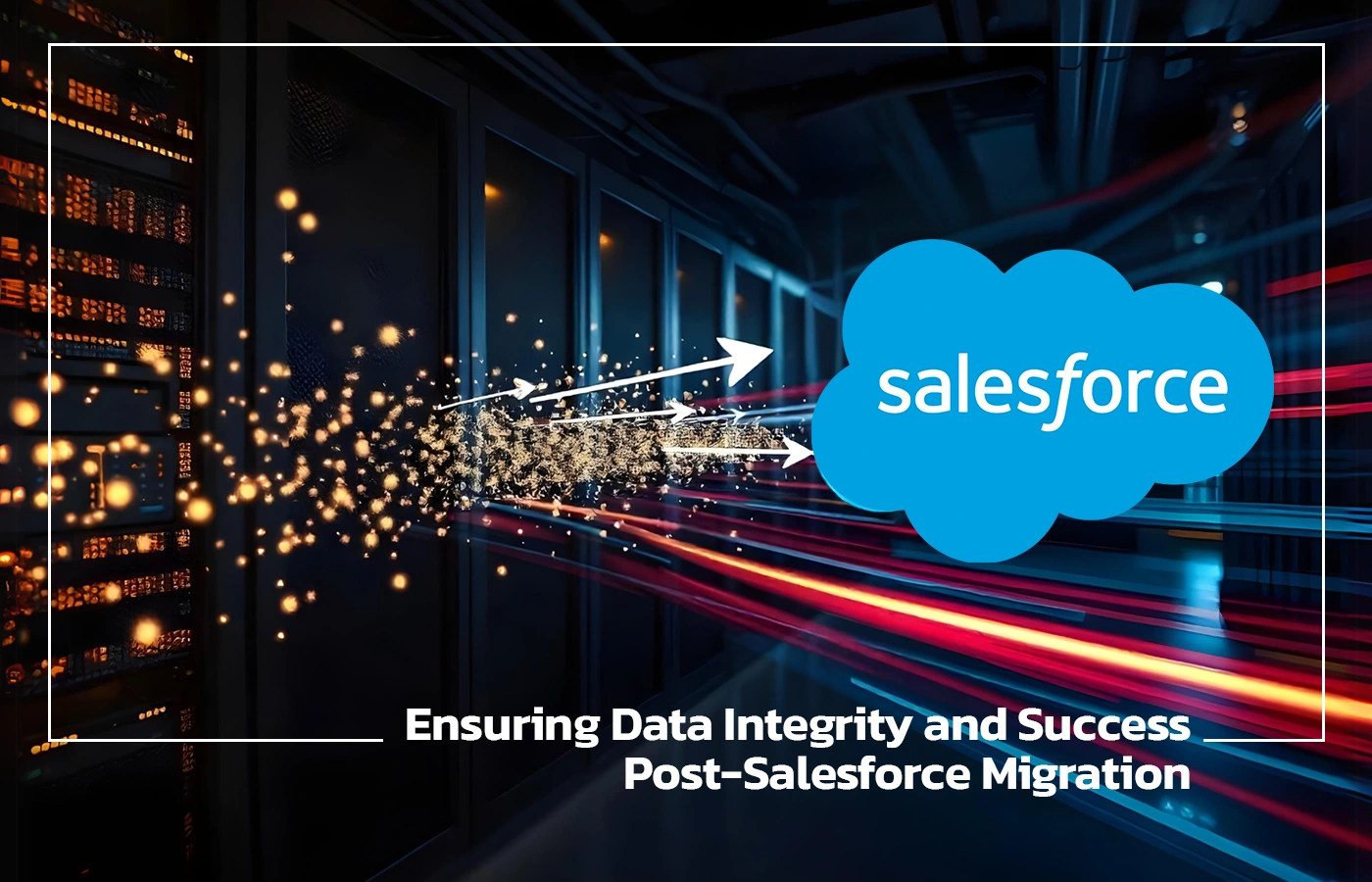Ensuring Data Integrity and Success Post-Salesforce Migration

Introduction
Successfully migrating to Salesforce from your legacy system is the beginning of your CRM journey. While moving data is a critical step, the true challenge is in ensuring data integrity i.e. accuracy, security, and usability of the data, post-migration.
Proper validation, cleanup, and change management, is essential for a successful migration and to deliver the expected business value.
In this second part of our Salesforce Data Migration series, we’ll detail the essential strategies to preserve data integrity, enhance security, and smoothly navigate organizational changes after migration.
By focusing on these crucial post-migration steps, you can ensure your data is reliable, your teams empowered, and your Salesforce environment optimized to drive growth and success.
In this second part, let us explore how to data integrity for a secure long-term success and make the most of your CRM for business growth.
Preserving Data Integrity During Migration
1. Validate and Monitor Data
Ensuring data accuracy during migration involves:
- Regular data checks: Validate migrated data against source records.
- Data consistency: Maintain relationships between fields and objects (e.g., contacts linked to accounts).
Pro Tip: Compare a sample of migrated data with the source system to catch discrepancies early.
2. Backup and Recovery
Always have a backup strategy to safeguard against data loss or corruption:
- Perform incremental backups* at every stage.
- Use tools like Salesforce Shield to add an extra layer of protection for sensitive data.
3. Incremental Data Backup and Its Importance in Data Clean-Up
Incremental data backup is the process of backing up only the changes made to the data since the last backup—whether full or incremental—are saved. Incremental data backups significantly reduces the time, storage, and resources needed, while ensuring up-to-date data protection.
During a Salesforce data migration or clean-up process, incremental backups play a vital role in safeguarding critical information. By continuously capturing changes, businesses can easily revert to previous states if errors occur during data cleansing—such as accidental deletions, incorrect deduplication, or formatting issues.
Incremental backups provide a safety net, allowing teams to cleanse using strategies confidently while ensuring that no valuable data is permanently lost. This approach not only preserves data integrity but also minimizes downtime and risk, enabling a smooth and reliable migration process.
Post-Migration Reconciliation and Clean-up
After migration, verify data accuracy and resolve lingering issues:
- Reconcile Data: Compare key fields (e.g., names, dates) between source and Salesforce records.
- Address Inconsistencies: Identify and resolve any discrepancies or missing records.
- Ongoing Data Hygiene: Establish regular audits and clean-up processes to maintain data quality.
Data Security Considerations
Salesforce offers powerful tools to protect your data:
- Encryption: Use Salesforce Shield to encrypt data at rest and in transit.
- User Access Management: Apply role hierarchies and field-level security to limit data access.
- Data Masking: Protect sensitive data in sandbox environments.
Pro Tip: Regularly audit permissions to ensure users have the minimum access needed for their roles.
Compliance
Ensure your migration aligns with data privacy regulations like GDPR or HIPAA to avoid legal risks.
Managing Organizational Change
A Salesforce migration impacts workflows and teams. Effective change management is critical:
- Communicate Early: Keep stakeholders informed about benefits, timelines, and expected challenges.
- Training Programs: Educate teams on Salesforce functionalities to ensure smooth adoption.
- Support Systems: Provide post-migration technical support to address questions or issues.
Pro Tip: Use Salesforce Trailhead to train users effectively at all experience levels.
Ongoing Monitoring and Maintenance
Your Salesforce system requires consistent oversight to deliver value:
- Perform regular data audits to ensure accuracy and compliance.
- Monitor system performance to resolve any bottlenecks or errors.
- Schedule periodic backups to prevent data loss.
Key Takeaways
Post-migration success depends on data integrity, security, and organizational readiness. By prioritizing validation, clean-up, and change management, you can ensure Salesforce delivers the full ROI for your business.
Ready to Transform Your CRM Experience?
Let PSAG Technologies guide you through a secure and seamless Salesforce migration. Contact us today to maximize your CRM investment and drive business success.
Blog Series Recap
- Blog 1: A Detailed Guide to Salesforce Data Migration – Best Practices – Focused on planning, tools, and best practices for Salesforce data migration.
- Blog 2: Ensuring Data Integrity and Success Post-Salesforce Migration – Covers data integrity, security, and organizational change management post-migration.
By following this comprehensive guide, you’re now equipped to execute a successful Salesforce migration with confidence.
Reach Out to Ensure Seamless Salesforce Migration
